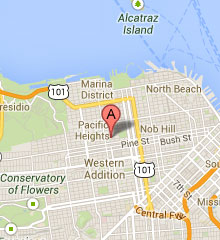Endometriosis impacts millions of people in the United States. A diagnosis of this condition may feel daunting, but the best tool at your disposal is education. Let’s dispel some endometriosis myths and give you the accurate information you need to care for yourself.
Myth: I Can Prevent Endometriosis
There’s no clear cause for endometriosis, so there isn’t a surefire way to prevent it. You can take steps to lower your estrogen levels, helping reduce risk. These steps include:
- Choosing a lower-estrogen birth control
- Losing weight
- Regularly exercising
No two bodies or situations are the same, so there’s no guarantee that the above methods will prevent endometriosis. If you’ve already been diagnosed with the condition, there’s nothing you can do to reverse it.
Myth: I Can’t Get Pregnant with Endometriosis
Endometriosis can impact fertility due to the inflammation and scar tissue it produces around the reproductive organs. Fortunately, while this can sometimes make it more challenging to conceive, endometriosis is treatable. A doctor may be able to surgically remove the endometrial tissue or offer fertility treatments like IVF.
Myth: Endometriosis Always Causes Pain
Data suggests that more than 60% of those diagnosed with endometriosis report chronic pelvic pain and are 13 times more likely to experience abdominal pain than those without the condition. However, while pain is a common symptom, it’s possible to be diagnosed with endometriosis without experiencing any pain.
Myth: Pregnancy Can Cure Endometriosis
While some patients report improvements in their endometriosis symptoms during pregnancy, some don’t. Because pregnancy causes hormone levels to change, it can impact endometriosis, sometimes helping to abate symptoms or complications. That being said, different people with the condition will always respond to pregnancy differently, with some continuing to feel endometriosis-related pain throughout the pregnancy.
Myth: Endometriosis Only Impacts the Pelvic Region
While it’s true that endometriosis commonly occurs in the pelvic region, it can sometimes appear elsewhere within the body. For example, although extremely rare, endometrium-like tissue has been found in the lungs.
Myth: Endometriosis Always Improves After Menopause
Even though endometriosis symptoms occur most often during menstruation, they can still last after monthly cycles end. After menopause, the ovaries continue to produce a small amount of estrogen, causing endometrial growths to respond and sometimes cause pain. Post-menopausal patients can opt for surgery to remove the growths or even get their ovaries removed.
Get Your Endometriosis Questions Answered
There are a lot of myths and misconceptions surrounding endometriosis. If you have questions about your symptoms, it’s best to speak with your OBGYN. At PGOMG, we’re happy to answer your endometriosis-related inquiries and create a personalized treatment plan. For more information, contact us today.


